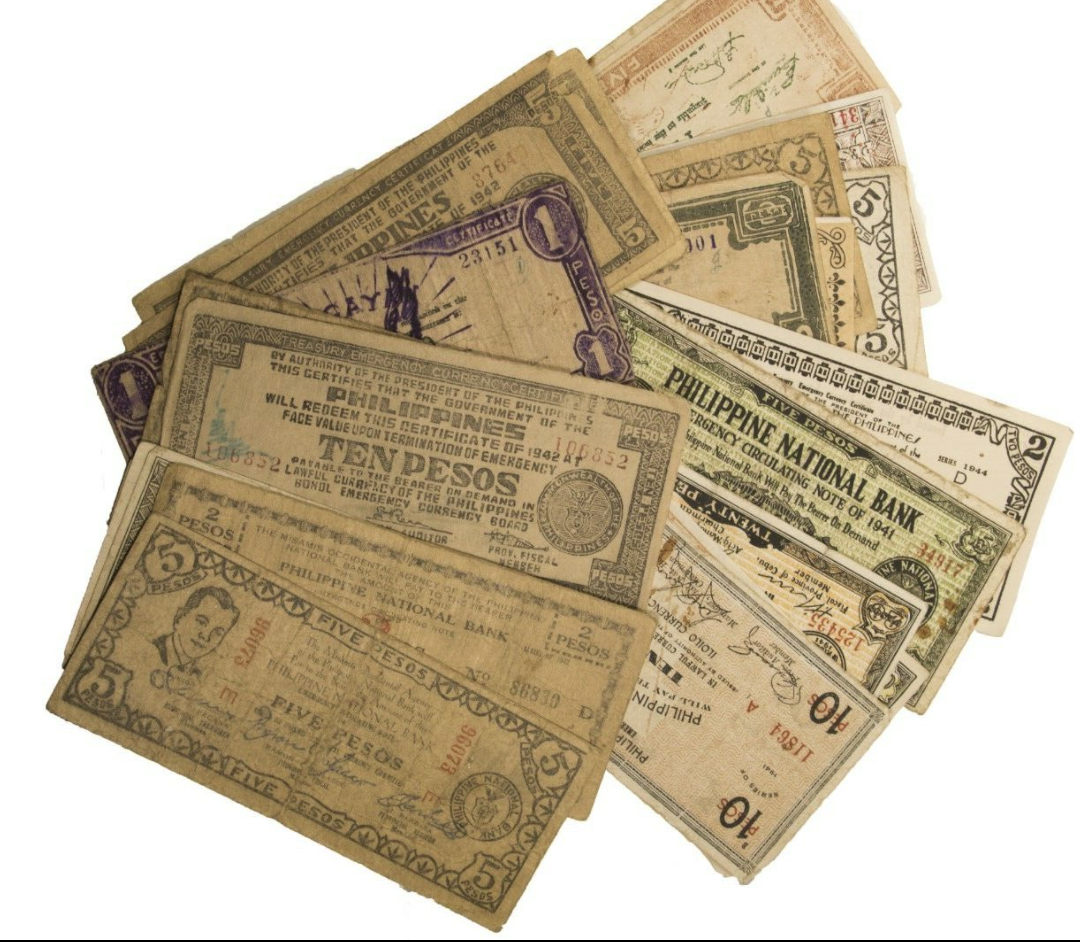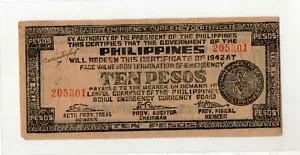Philippine Guerilla Money of World War II-
-On 7 December, 1941, the Japanese bombed the U.S. naval base at Pearl Harbor; the next day, they invaded the Philippines, a key American ally. Upon taking the country, the Japanese issued their own currency, declaring that existing money was not longer valid—one of many harsh measures that turned the Filipinos against them. A guerilla campaign waged by Philippine freedom fighters—and supplied by the U.S. via submarine—wreaked havoc on the occupying forces.-

-With physical money in short supply, guerilla fighters in the field and local governments in free provinces printed emergency currency—peso notes of various denominations printed on a hodgepodge of makeshift presses with whatever paper and ink could be obtained—on the authority of President-in-exile Manuel Quezon, whose likeness appears on some of the notes.–

-The notes in this set were printed by and circulated in various provinces of the Philippines during the Japanese occupation. Included are issues of Bohol, Cagay, Iloilo, Luzon, Misami, Negros, and Mindanao.-

-During the Japanese occupation, possession of guerilla money was forbidden on penalty of death; entire villages could be subject to harsh retribution if these notes were found in any quantity. Their ubiquity even in the face of reprisal is a testament to the courage and indomitable spirit of the Philippine people.–Guaranteed Genuine–These notes have been inspected and are guaranteed genuine.
The chain of event that gave birth to this currency started when the Japanese forces captured the Philippine Islands from 1943 to 1945. These islands were the territorial possession of the United States; Spanish ceded these islands to the US after the Spanish-American War. America paid around 20 million dollars for it.
These Emergency circulating notes, as they are officially called, were printed by the Philippine Commonwealth Government in exile. The resistant fighters and civilian officials created and used this guerrilla currency to pay for commodities. These bills do not have any government authority but Gen. MacArthur headquarters authorized their use.
These notes are divided into two types by the collectors, Provincial and Municipal issues:-
1. The Municipal notes were used for small transactions. This note was not redeemable after the war. It was created due to the necessity of the regular economic transactions.
| Municipal and military issues are listed under the province in which they were primarily located. Aklan Antique Apayao Bohol Cagayan Capiz Cebu Culion Leper Colony Ilocos Norte Iloilo Isabella Lanao Leyte Luzon island Masbate Mindanao Mindoro island Misamis Occidental Misamis Oriental Mountain province Negros island Negros Occidental Negros Oriental Nueva Vizcaya Palawan Romblon Samar Surigao Zamboanga |
2. The Provincial notes were authorized by President Quezon. It was the creation Provincial Emergency Currency Boards. These notes were used even after the War.
These notes were made secretly, due to this it varied. One can find excellently crafted to crude specimens of these currency. All types of mediums like typewriters, wooden blocks, tires, metal plates and duplicating machines were few known methods used. Even the ink, size and paper varied.
The Second Philippine Republic was Japanese sponsored government. They put a banned on the possession of these Guerrilla currencies. These steps were taken to establish a monopoly on the currency regulation. Anyone found with Guerrilla notes was either arrested or executed.